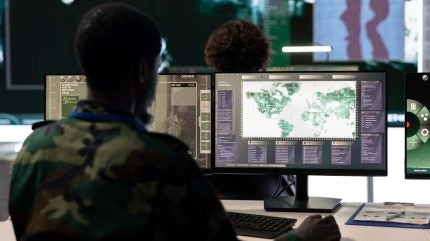Data is becoming more powerful than any weaponry on the battlefield – and 5G is the backbone

The face of warfare is being redrawn. Victory on the battlefield now often comes down to how quickly data can be collected, analyzed, understood and securely distributed. Sitting at the heart of this transformation is 5G connectivity.
Recent conflicts made one thing clear: firepower matters, but the real advantage lies in the speed and quality of information being distributed to the front lines. In modern operations, militaries log millions of hours of battlefield data, including drone footage and information on troop movements. Data is a “priceless” resource as it has value, not only for immediate operations but also for training artificial intelligence systems to predict patterns and improve decision-making. Across conflict zones, military planners recognize that the ability to manage and exploit data at scale now rivals troop and ammunition numbers in importance.

Discover B2B Marketing That Performs
Combine business intelligence and editorial excellence to reach engaged professionals across 36 leading media platforms.
Find out more
Modern conflicts are fast and unpredictable. This means that drones, autonomous vehicles, radar and AI-driven platforms are no longer exceptions but central to operations. In some cases, up to ninety percent of battlefield strikes are now achieved with drones, guided by AI systems that process vast amounts of real-time data. Yet these assets only function if the networks connecting them are strong. The side that moves data quicker between sensors in the field, decision-makers in command posts and units in motion gain the advantage. Communications infrastructure is becoming the nervous system of the modern military. While 5G is not the only way to achieve this, its low latency, high bandwidth and resilience in contested environments make it the most capable enabler of secure coordination.
5G as a strategic differentiator
Nokia has built these mission-critical networks for years, with more than fifty defense-grade systems already deployed. Now we work closely with NATO members, allied nations and the US Department of Defense to introduce 5G for defense. From NATO’s Joint Viking exercise in Norway to cross-border 5G slice handovers with the Finnish Defence Forces, this technology is currently being tested in harsh environments.
Partnerships are central to that progress. Our work with Lockheed Martin and Verizon integrated Nokia’s military-grade 5G into the 5G.MIL® Hybrid Base Station, allowing seamless handover between tactical networks and commercial 5G without interruption. On the ground, this means drones, robots and sensors can remain connected and feed data to AI systems in real time, giving commanders sharper situational awareness. These advances are transformational for how forces connect and operate. Ultimately, this technology does more than connect systems and enables the secure and easy transfer of data. It delivers strategic advantages and, above all, keeps nations safe.
Building on this track record, Nokia now extends the benefits of 5G to the very edge of defense operations. At DSEI 2025, we are introducing two new systems designed with the frontline in mind: the Nokia Mission-Safe Phone and the Nokia 5G Banshee Tactical Radio (BTR).
The Nokia Mission-Safe Phone is a defense smartphone purpose-built for resilience and security. Manufactured in Europe, it protects sensitive data and operates in the harshest environments, giving troops a tool they can rely on when the stakes are highest.
The Nokia 5G Banshee Tactical Radio (BTR) is a rugged, portable “network in a box.” With enhanced 5G capability, it provides fast and reliable connectivity where fixed infrastructure cannot. Whether supporting forward bases, mobile command posts or dispersed units, it delivers the bandwidth and low latency needed for instant coordination and secure operations.
These are not standalone products. They fit into a wider tactical ecosystem that draws on commercial innovation while being adapted for military demands. Adapting 5G for defense requires targeted adjustments – such as lower power consumption and rugged form factors – but the result is a technology that can transform the way militaries connect.
The future: Unified, secure and intelligent battlefields
As AI and advanced analytics move to the center of defense operations, the demand for secure, high-capacity data networks will only increase.
This is exactly where 5G delivers an advantage. It is around ten times faster than existing tactical networks, giving forces the bandwidth needed to link sensors, drones, and robotic systems with the artificial intelligence that interprets their data. This integration of machines and richer intelligence transforms situational awareness and enables real-time decision-making.
With the Nokia Mission-Safe Phone and the Nokia 5G Banshee Tactical Radio, we are continuing to extend these capabilities to the front lines. Both systems are designed to provide secure and resilient connectivity in the toughest conditions, ensuring that troops and commanders alike have the information they need, regardless of terrain or time. Together, they strengthen resilience and accelerate decision-making. And at the core of it all is 5G.
For more information on how Nokia is enabling the secure, connected battlefields of tomorrow, visit Nokia Defense Tactical Communications.


